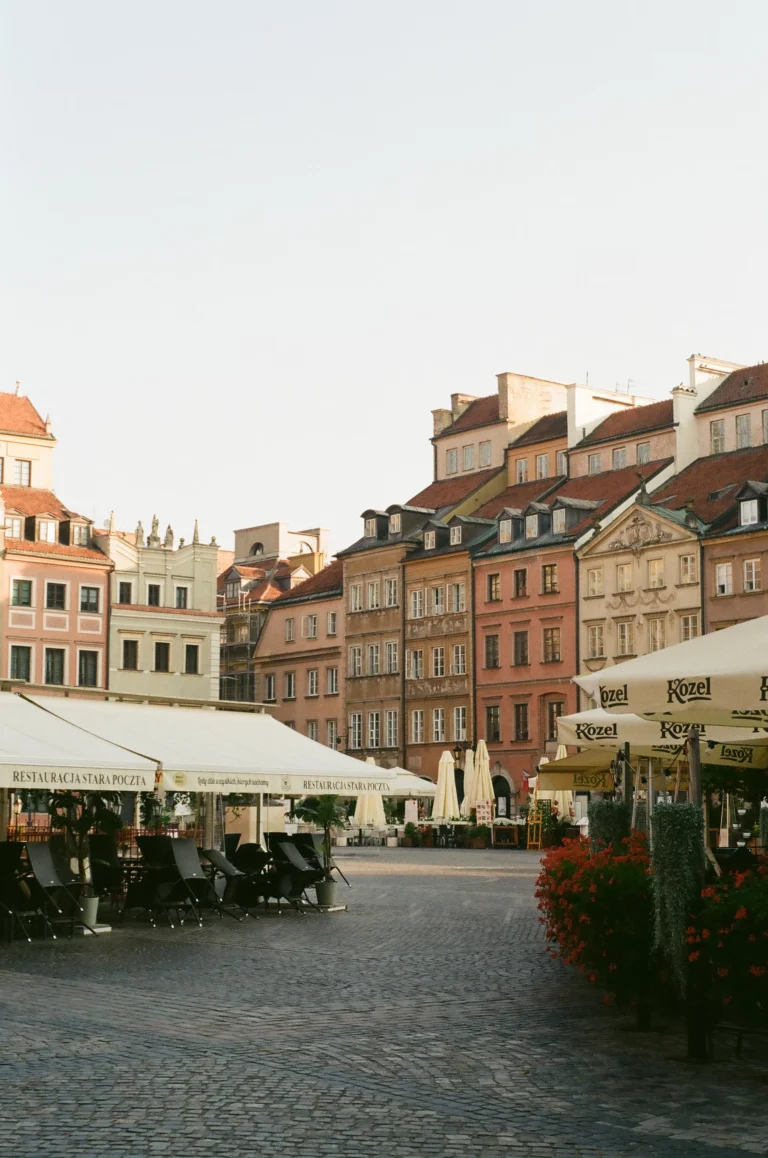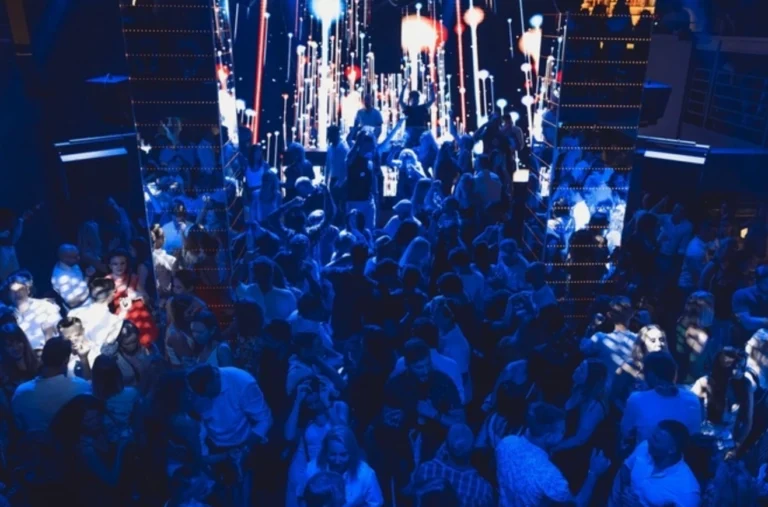Looking to explore Warsaw’s cultural scene but not sure where to begin? The city boasts dozens of fantastic museums – everything from traditional art galleries showcasing famous painters to modern interactive spaces where you can get hands-on with the exhibits.
We’ve put together a list of must-visit museums that are worth checking out even if you’re only in Warsaw for a day or two.
Want to discover more about Warsaw? Take a look at our city guides for 1- and 2-day visits, plus our rating of the best tours around the capital.
1. Muzeum Narodowe


Most people start their visit to Warsaw’s National Museum at the Faras Gallery, home to Europe’s largest collection of Nubian Christian art.
The museum spans five floors of a modernist building, designed by Tadeusz Tołwiński back in 1938. You’ll find ancient papyri and statues in the Egyptian hall, while the medieval section features impressive altarpieces and religious paintings from Central Europe.
Visitors often praise how easy it is to get around – you can grab a free audio guide from their website and use maps that outline one-hour or two-hour routes. If you want to see all 830,000 exhibits, you’ll need to set aside at least 2-3 hours.
The Polish art section showcases 20th-century works by Matejko, Wyspiański, Boznańska, and Kossak, while the Eastern art gallery features pieces from China, Japan, and India.
Entry is free on Tuesdays, though it gets pretty packed with tour groups. Students under 26 can get in for just 1 złoty. The museum’s open Tuesday through Sunday, 10:00 to 18:00.
Beyond the main building on Jerusalem Avenue, you can check out four other branches: the Poster Museum in Wilanów, the Sculpture Museum in Królikarnia, the Museum of Interiors in Otwock, and the Museum in Nieborów.
2. Muzeum Powstania Warszawskiego


The Warsaw Uprising Museum turns 76 days of Nazi resistance into a powerful story spread across 3,000 square meters of an old tram power station. Since opening in 2004, it’s gathered over 30,000 items – everything from weapons and uniforms to personal letters and photos from those who fought.
On the first floor, you’ll see working 1940s printing presses churning out copies of wartime newspapers and leaflets. As you walk along granite cobblestones among the ruins, sounds, lighting, and multimedia displays bring wartime Warsaw to life.
Kids love the “Little Insurgent” room, where they can play as wartime medics or postal workers and handle replicas of period toys.
The heart of the museum is a steel monument running through all floors, playing heartbeat sounds that represent the city’s pulse in 1944. The elevator to the second floor displays a collection of resistance armbands.
Upstairs, you can experience a recreated underground canal with realistic effects. There’s also a full-size replica of a Liberator B-24J aircraft and exhibits about Allied support.
Outside in Freedom Park, you’ll find the Wall of Remembrance listing 11,000 fallen fighters and the 200-kilogram “Monter” bell.
The museum’s open daily with free entry on Mondays. Plan for at least 1.5 hours to see everything, and try to come early to beat the crowds.
3. Centrum Nauki Kopernik


Your journey starts with a robot guide at the entrance, leading to three floors packed with over 450 hands-on exhibits.
The center features different zones where you can play around with electricity, light, sound, and other cool physics phenomena. Next door, the “Copernicus Sky” planetarium (separate entrance on the right) runs shows in Polish with English audio guides available.
You’ll want to set aside 2-3 hours to really enjoy everything, and it’s smart to book tickets online a few days ahead.
There’s a nice café on the top floor serving sandwiches, desserts, and coffee – perfect for taking a breather between experiments. While the ground floor is great for kids, adults tend to enjoy the upper floors more. You’ll find water fountains and clean restrooms throughout the building.
4. POLIN Muzeum Historii Żydów Polskich

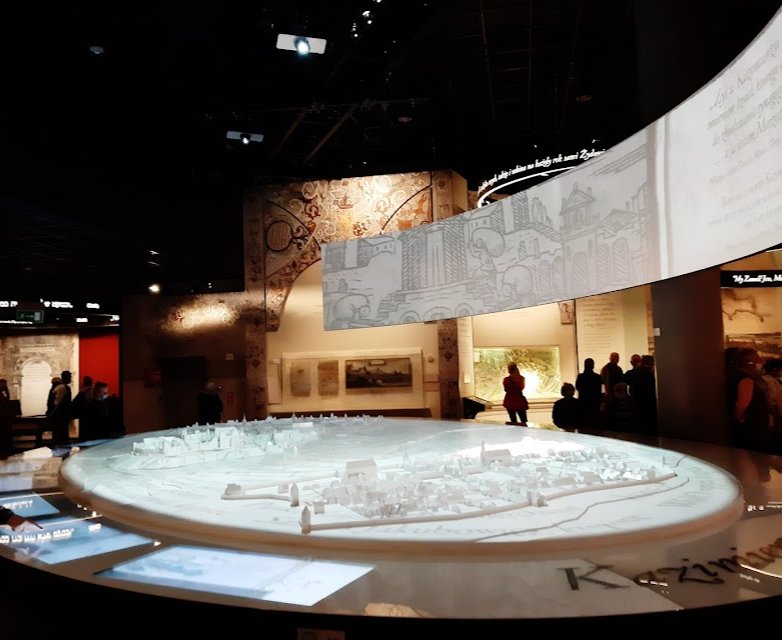
Instead of dry historical facts behind glass, Warsaw’s POLIN Museum brings a thousand years of Polish-Jewish life to life through hands-on exhibitions.
The museum features eight galleries that walk you through key moments – from early Jewish settlements to the present day. You’ll find a beautifully recreated pre-war Jewish street and a full-size synagogue that make history feel real.
Plan to spend 3-4 hours to really take it all in. If you’re visiting with kids, there are plenty of educational programs and workshops to keep them engaged.
The modern building itself, designed by Finnish architects, has won several awards. Inside, you’ll find plenty of space to move around, clear signs to guide you, and spots to take a break. The museum is completely accessible for visitors with mobility needs.
Free entry on Thursdays. You can pick up books and souvenirs at the museum shop, and grab a bite of authentic Jewish food at the “Warsze” restaurant.
You’ll find POLIN in Muranów, the historic Jewish district. Right nearby are some important memorial sites – the Ghetto Heroes Monument, Jan Karski Monument, and the Anielewicz Bunker.
5. Muzeum Geologiczne

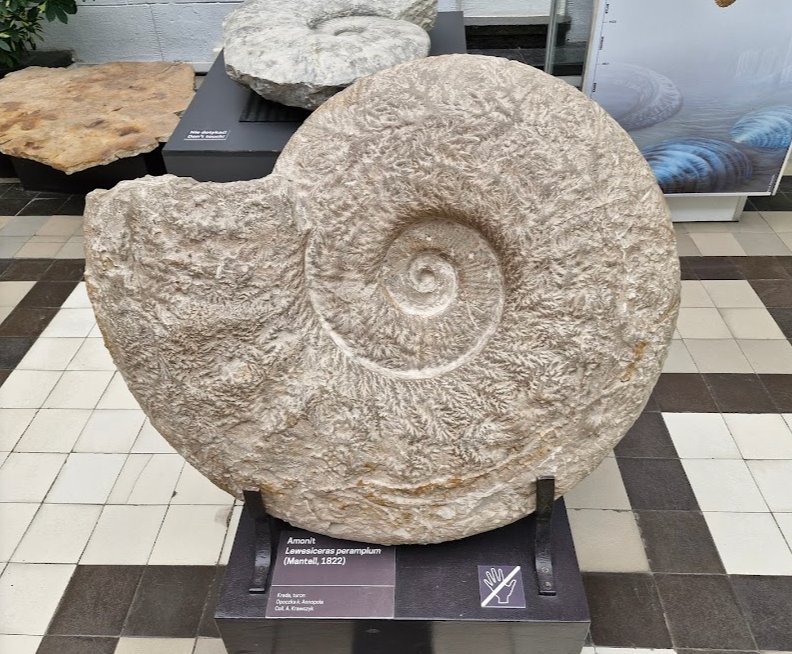
The Warsaw Geology Museum brings Earth’s story to life with 4,500 fascinating pieces collected over its 100-year history.
Through eight themed exhibitions, you can explore Poland’s geological journey and check out amazing minerals from across the globe. The star attractions are the Ice Age skeletons – think mammoths, woolly rhinos, and cave bears.
Some real highlights are the dinosaur footprints from the Świętokrzyskie Mountains and a life-sized Polish dilophosaurus. They’ve also built desert and cave models to show how nature works.
You can find the museum at 4 Rakowiecka Street, and it’s free every day except Saturday. Whether you’re a kid who loves dinosaurs or an adult interested in geology, there’s something here for you.
Their collection shows how coal forms through rock samples, and includes some stunning precious stones like agates, rubies, and amethysts. The museum gives you the full picture of Poland’s geology, with more research materials kept in branches around the country.
6. Zamek Królewski


Step into the Royal Castle in Warsaw and you’ll step back into Polish history. After being completely destroyed in World War II, it was carefully rebuilt using old miniatures and photos as guides.
You get a free audio guide to help you explore rooms filled with works by Rembrandt and Bacciarelli at your own pace. In the Royal Apartments, you can see Stanisław August Poniatowski’s royal items and, interestingly, an urn holding Tadeusz Kościuszko’s heart.
Check out the Lanckoroński Gallery’s painting collection and the handmade majolica stoves in the Throne Room. When you need a break, there’s a cozy café with views of a small garden.
Wednesdays are free entry days. They’re always adding new pieces – even if you visited 15 years ago, you’ll discover plenty of new things to see.
7. Muzeum Wojska Polskiego


The new Polish Army Museum in the Warsaw Citadel takes you through nearly a thousand years of military history. Everything’s arranged by time period, from medieval swords to Soviet T-34 tanks, making it easy to see how weapons evolved.
You can grab a free audio guide on your phone and explore everything in about 2 hours. Want to see some tanks? The outdoor area with armored vehicles is free to visit. Inside, you’ll find an impressive collection of old military uniforms and weapons in a modern building with multimedia displays.
Free admission on Thursdays. Some rooms are still empty, waiting for new exhibits. While the museum covers all the big moments in Polish military history, some visitors wish there was more detail about the military leaders.
- Cytadela Warszawska – Plac Gwardii Pieszej Koronnej – Pawilon Południowy, Dymińska 13, 01-519 Warszawa
- 261 877 014
- Visit Website
8. Muzeum Domków Lalek, Gier i Zabawek


The Warsaw Museum of Dollhouses, Games and Toys is home to an incredible collection of 150 miniature houses, complete with carefully crafted furniture and interiors from various time periods.
The permanent collection features four distinct sections: historical dollhouses, religious toys, dolls from around the world, and Polish games from the 20th century. What sets this museum apart is its rare collection of religious toys – something you won’t find in many other museums.
The museum keeps growing – they’re currently working on adding new exhibition spaces. You’ll find all the usual amenities: a cloakroom, restrooms, and a gift shop selling collectible miniatures. The main hall is also wheelchair accessible.
9. Muzeum Warszawy


Spread across 11 restored historic townhouses in Old Town Market Square, the Warsaw Museum takes you on a journey through the city’s history from the 14th century to today.
The museum’s five floors showcase the city’s evolution through fascinating collections – everything from vintage clocks and medals to maps, clothing, and postcards. Don’t worry about the language barrier – all exhibits come with detailed descriptions in both Polish and English.
They’ve thought of everything when it comes to visitor comfort: there are restrooms on every floor, a café when you need a break, and best of all, a viewing terrace at the top with stunning views over Old Town Square.
The museum welcomes visitors Tuesday through Sunday, and admission is free on Thursdays.
10. Muzeum Flipperów

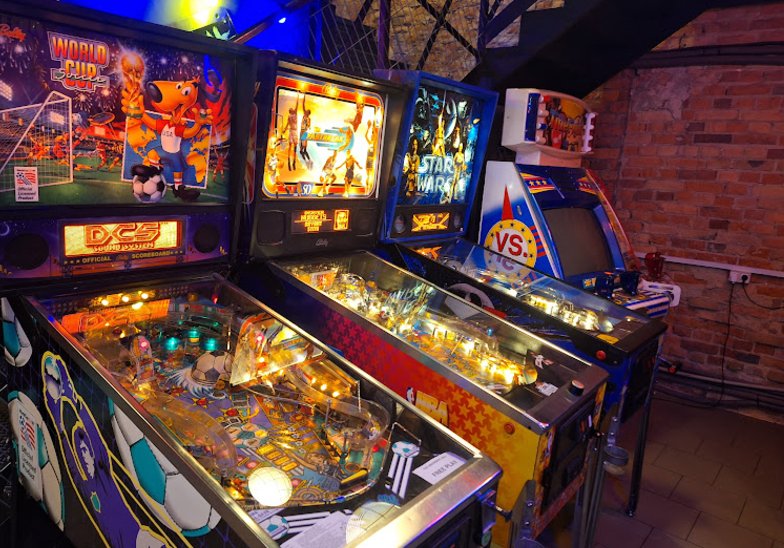
Step into the golden age of gaming at Muzeum Flipperów, where over a hundred arcade machines await. The collection is a time capsule of gaming history, featuring everything from 1930s pinball machines to beloved 80s arcade games like Mortal Kombat 4, Pac Man, and Street Fighter.
The best part? You can play all 60 working machines without spending an extra penny. Fan favorites include Twilight Zone, Terminator 2, Batman Forever, and The Addams Family.
These vintage machines are kept in amazing condition – most run perfectly thanks to ongoing maintenance work. If you’re interested in the history behind the games, you can join a guided tour to learn all about pinball’s evolution.
Most people end up spending 2-3 hours trying out different machines. Your ticket is good for the whole day, so you can come and go as you please.
When you need a break, grab a drink or snack at the bar, or head to the outdoor seating area to relax.
11. Muzeum Katyńskie

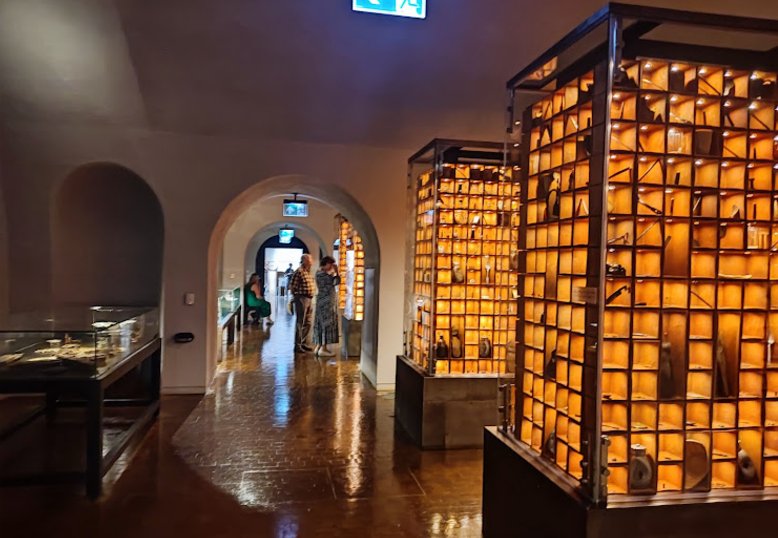
The Katyn Museum tells the heartbreaking story of 1939-1940, when 22,000 Polish prisoners of war lost their lives in Soviet camps and prisons.
Every exhibit – from personal belongings to official documents – helps piece together this tragic chapter in history, creating what’s become one of the world’s most significant collections of its kind.
What makes this museum special is how it honors each victim individually through their personal artifacts and stories.
Many visitors strongly recommend checking out the works of Józef Czapski, who witnessed these events and conducted his own investigation. To really take everything in, give yourself plenty of time and pick up an audio guide – it’ll help you understand the full scope of what you’re seeing.
12. Centrum Pieniądza NBP im. Sławomira S. Skrzypka


At the free Money Centre museum, you’ll dive straight into the world of finance through hands-on exhibits – including the chance to pick up a real gold bar and take a peek inside a bank vault.
Spread across 2,000 square meters, the museum showcases 4,000 exhibits, from thousand-year-old coins to a massive 22 kg coin. Visitors can explore the history of money from ancient times to today’s payment tech through 250 interactive displays.
Kids love making their own bank cards and taking part in finance-themed quizzes. The 90-minute tour takes guests through 16 themed rooms, showing how payment methods have evolved over time.
With 26 educational programs for everyone from school kids to adults, there’s something for all ages. While you might wait up to 30 minutes during busy times, visitors say it’s definitely worth it.
13. Muzeum Farmacji


Housed in an old Warsaw pharmacy, this unique museum features 7,000 pharmaceutical items. The Pharmacy Museum lets you step back into the 19th century with its recreated historic pharmacy, complete with original furniture, tools, and containers.
The exhibits spotlight the fascinating history of medicines, poisons, and narcotics. There’s even a special room dedicated to traditional Chinese and Japanese medicine, where you can learn about ancient healing practices from the Far East.
The museum’s library holds 4,000 rare pharmaceutical books, open to researchers. Most of the collection has been donated by the pharmaceutical community, which has been actively supporting the museum for over 30 years.
14. Narodowe Muzeum Techniki

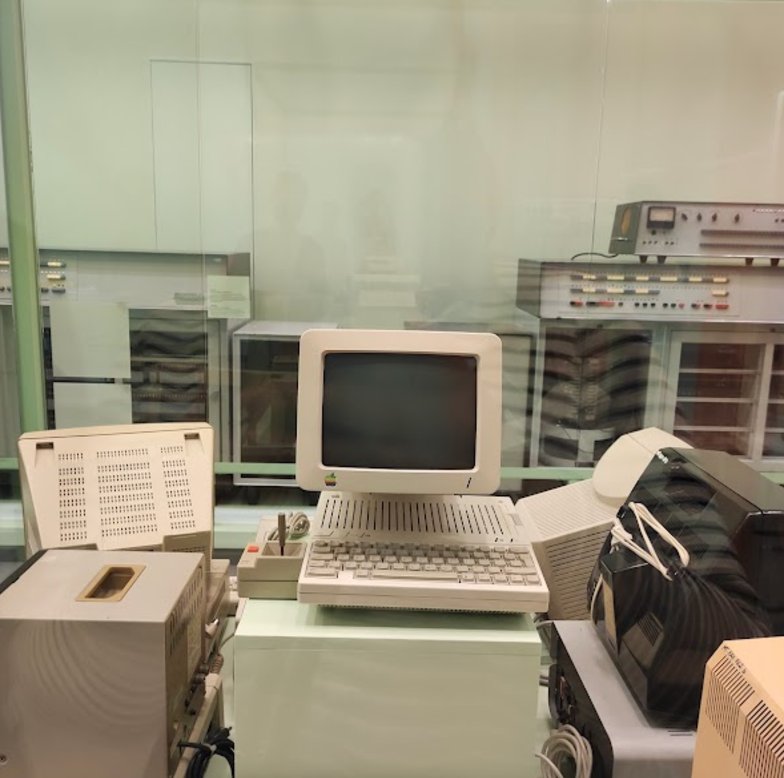
From old computers running on 140 kW to rows of vintage motorcycles stacked on multiple levels – the National Museum of Technology showcases Poland’s engineering achievements.
The main exhibition traces the development of transport, computing, and scientific breakthroughs in Poland. The computer hall shows the journey from basic counting tools to early computers, while the impressive automotive section features rare Polish-made vehicles.
15. Muzeum Azji i Pacyfiku


The Asia and Pacific Museum houses an incredible collection of 23,000 items – everything from Indonesian weapons to Tibetan masks. It all started with diplomat Andrzej Wawrzyniak, who collected over 4,000 art pieces during his 9-year posting in Indonesia.
The museum regularly hosts workshops where you can try your hand at traditional skills like writing on palm leaves, guided by expert craftspeople.
Though it’s just three rooms, every piece is carefully chosen and comes with detailed explanations from the friendly staff. You’ll also find a cozy bookshop with themed books and a café.
16. Muzeum Więzienia Pawiak


At the entrance stands a powerful memorial – a withered tree covered in metal plaques bearing the names of prisoners who died here.
The Pawiak Museum sits on the site of a former Nazi prison where thousands of Polish prisoners were held and killed between 1939-1944. You can see reconstructed cells featuring original elements – bars, hinges, and locks discovered in the ruins.
The courtyard is marked with marble slabs showing significant spots – the morgue entrance, the scales used for public executions, and the area where prisoners were forced to crawl over hot ashes. Though small, the museum tells the detailed stories of prisoners and displays documents from this dark period.
17. Muzeum Życia w PRL
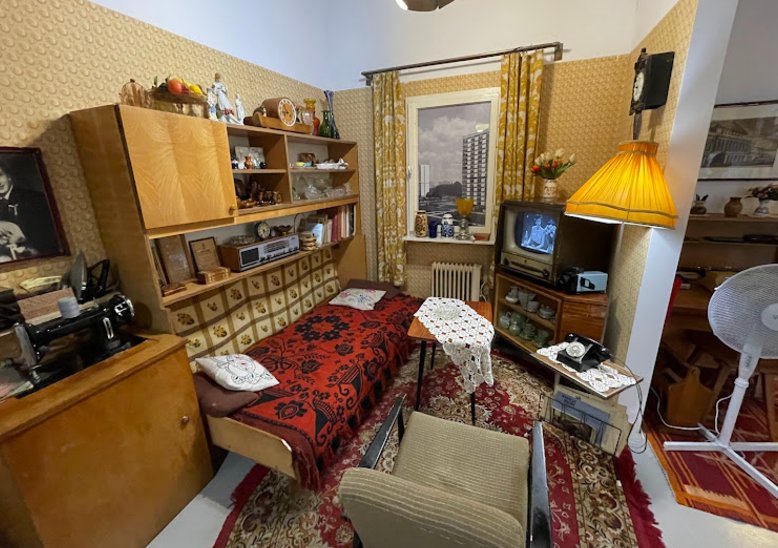

Step into the former PZO optical factory and you’ll find yourself in a 260-square-meter time capsule of life in socialist Poland. The apartment interiors feel incredibly authentic, down to the smallest details – from the “Frania” washing machine and “Bambino” record player to the iconic Fiat compact car.
More than just a display of vintage items, the museum captures the fascinating contradictions of the era – streets lined with empty shops and endless queues, yet somehow maintaining a vibrant café culture despite widespread shortages. What visitors love most isn’t just looking at the exhibits – they can actually sit down in a recreated socialist-era café and soak in the atmosphere.
While the collection might be compact, it tells a powerful story of both daily struggles under socialism and the clever ways people found to make life work.
18. Państwowe Muzeum Etnograficzne


Walk into the Ethnographic Museum and the first thing you’ll hear is the distinctive sound of a traditional Polish bagpipe – just the beginning of a vast collection that’s been growing since 1888.
Spread across seven floors, you’ll find not just Polish folk costumes and everyday items, but fascinating artifacts from all over the world. Kids get their own special area with hands-on activities where they can explore traditions from different cultures.
The temporary exhibitions are always worth checking out – like the recent showcase of Magdalena Szummer’s work that got everyone talking. For researchers, there’s a treasure trove of rare ethnographic books in the museum’s library.
19. Muzeum Polskiej Wódki


Ever wondered how Poland’s famous spirit is made? The Polish Vodka Museum offers a crash course in just an hour, walking you through everything from ingredient selection to modern distillation methods. It’s perfectly housed in the old “Koneser” distillery – the former home of famous Wyborowa and Luksusowa vodkas.
Get hands-on with interactive displays that show you each step of the vodka-making process, while guides share their expertise during tasting sessions. You can opt for a regular tour with 3-4 vodka samples, or go all out with an extended experience including dinner at the restaurant.
The whole experience was brought to life by the creative minds of renowned designer Andrzej Pągowski and the architectural experts at Nizio Design International.

